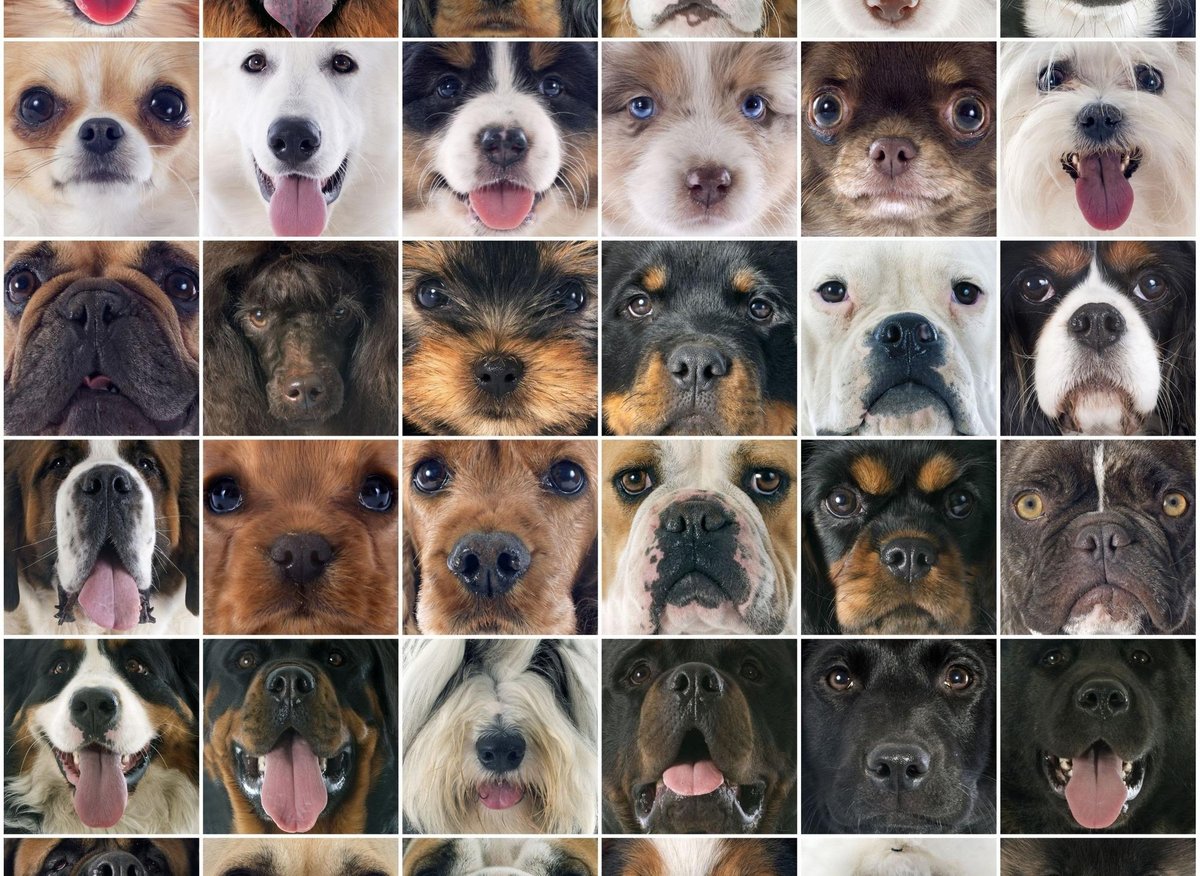Item body
At first glance, Gabby appears to be a perfectly normal adolescent dog – a healthy, happy, and exuberant mixed-breed puppy who will soon be one year old. She is just one of an avalanche of around 3 million new American pets purchased or adopted to brighten the lives of their owners during the height of the COVID-19 pandemic.
It is only when she is approached by a stranger – or a strange dog – or is exposed to a new and unfamiliar environment that it becomes clear that Gabby is not as carefree as she is. ‘air. She often reacts with fear or uncertainty when meeting new people or other dogs. She is close to panic in the face of a new environment or an unfamiliar situation. Even taking her to the vet is more difficult and stressful than usual for her and her owners.
But Gabby is certainly not unique or even unusual. Instead, she is one of an unknown number of dogs who are now, and forever will be, products of the pandemic. While they were in the critical training weeks of early life, particularly in 2020, the behavior and socialization of this “P generation” of dogs were affected to varying degrees by their lack of normal contact and their behavior. experiences during the long months of isolation in quarantine.
“The first three months of a puppy’s life are extremely important for its social development,” said Dr. Christopher Lea, clinical assistant professor in the Department of Clinical Sciences at the College of Veterinary Medicine at Auburn University. “Primary socialization occurs during the first three to six weeks with a puppy’s litter mates. Then there is a period of secondary development of six to 12 weeks. This is when a puppy learns to interact with humans.
Cat Clutton, a certified dog trainer and founder of ReKalibratedK9 dog training services in Opelika, Ala., Said this early three-month period is critical to a dog’s behavioral patterns throughout its life.
“During this time, puppies learn to bond and communicate socially with other dogs and people, as well as to interact and react to different environments,” Clutton said. “Put simply, dogs who are not properly exposed to a variety of people, objects, sights, sounds, smells and environments during this time may still be afraid of some of these. same things.”
Many “Generation P” puppies have had little, if any, of the experiences and contacts described by Lea and Clutton. Instead, their first few months were largely spent in the company of their owners and possibly with older dogs in their households. To make matters worse, a higher than usual number of pandemic dog adoptions were for new owners more likely to make rookie mistakes in properly socializing puppies, even in a normal environment. This produced a perfect storm of bad circumstances at a critical time in these dogs’ developmental stage.
Even with experienced owners acting responsibly during pandemic isolation – avoiding crowds, gatherings, and outings at dog parks, while generally being as antisocial as possible – then many of their dogs have also become antisocial. And just as some humans experience anxiety during the transition to a degree of normalcy with the availability of vaccines, many of these puppies, who are now adolescent dogs, have anxiety issues themselves.
While these canine teens are more likely than usual to have behavioral issues socializing with strange people, places and other dogs, the biggest problem reported by trainers and vets so far is due to separation anxiety. As the COVID-19 situation improves, dog owners who have been confined to their homes for months are increasingly starting to return to work and school. Suddenly, dogs who have had constant human companionship throughout their young lives are bored and left alone for much of the day.
“We are seeing an increase in the number of animals with separation issues as owners return to their regular schedules,” said Dr. William “Blue” Brawner, owner of the PetVet Animal Health Center in Auburn, Alabama. “These are dogs that have never been left alone all day. They are doing fine up to this point. But as many owners return to normal routines, we are seeing more and more dogs struggling to adjust to this. This is an area where I think the pandemic has highlighted an already existing problem. ”
Lea agrees that separation anxiety is the most common problem he has seen so far.
“This is a big deal because most COVID-19 pets were happy to have their owners stay at home all day,” he noted. “Disrupting this pattern can trigger destructive behavior, and destructive behavior is a major reason people abandon their pets at animal shelters. “
Whether more dogs are being given up for adoption currently depends on who you ask. The American Kennel Club estimates that 73% of new dog owners who adopted a puppy during the pandemic have at least considered relocating or turning it into a shelter. A recent USA today The article noted that, so far in 2021, homeowner buyouts are up 82.6% from 2020. In contrast, those same numbers show a small percentage drop in buyouts over year pre-pandemic 2019.
So, is there little to no hope for Generation P puppies? Are many of them destined to end up with permanent behavior problems that cannot be corrected with any training, doomed by the unfortunate moment of their births? Will the majority of them end up overwhelming adoption shelters and rescues in the months to come, as owners despair of caring for them and they move on from cute and cuddly COVID-19 companions? to anxious and anxious adults?
Clutton said the sooner owners realize their dogs need help and act to get it, the better the likely outcome.
” Do not wait ! Waiting for behavior to become unmanageable doesn’t leave much flexibility for owners or coaches. We can always improve with behavior, ”she added,“ but the more bad habits are in place, the harder it is to change them.
“Having a puppy who is a blank slate and needs a lot of help learning routines and expectations is always a daunting task. The pandemic has made things even more difficult. But owners need to understand that their choice of adopting a puppy as a source of companionship and entertainment when stuck at home shouldn’t become a dog’s permanent problem.Learn to live with and manage your dog’s needs, whether you feel your puppy has been socialized as well whether you want it or not, is important.And if you are unsure of how to do this, be sure to seek professional help.
There is hope: with patience and consistency they can be trained. And Lea, Brawner, and Clutton are all optimistic that even the most conscientious of owners will be ready to provide their pets with the help they need.
“Training is easier when a dog starts with good socialization, but I think for the most part any dog can be trained appropriately with the right trainer and techniques,” Lea said. “Local clinicians and veterinarians can also help owners understand how to optimize their pet’s socialization. “
Tips for Owners of Pandemic Puppies:
Establish a regular routine
Even if you still work from home, set a regular schedule for your dog’s daily activities. Try to schedule eating, walks, and play at the same times each day on a schedule that will work whether you’re at home or at work.
A crate can be great
If you haven’t already, start crate training to provide a safe option for leaving your dog alone for short periods of time. Never use a crate as a punishment. Instead, start by giving your dog meals, treats, and toys in the crate, always leaving the door open so the dog doesn’t feel confined. Soon the crate will become your dog’s safe place.
Don’t force the problem
Taking an adult dog that is scared or does not know how to behave appropriately with other dogs and people and forcing them to interact without taking appropriate action may make the problem worse. The same goes for environmental soundness: “Flooding” a dog by forcing him into uncomfortable environments will not change his feelings about those spaces.
Find professional training
Dogs uncomfortable with unfamiliar surroundings, people, or other dogs after about five months of age need training plans that include counter-conditioning rather than just socialization or exposure. Counter-conditioning involves attempting to alter a dog’s emotional response to a trigger, making it a better choice for dogs who have already developed negative associations with certain experiences.
Ask if your veterinary clinic is a ‘fearless’ practice
Today, many veterinarians are trained in “fearless” techniques when it comes to treating nervous animal patients. Dogs and cats can visit the veterinary clinic to explore the office, get treats from the staff, and generally get to know the people and place without the trauma of treatment.
(Written by Mike Jernigan)
 Christ Yoder
Christ Yoder



